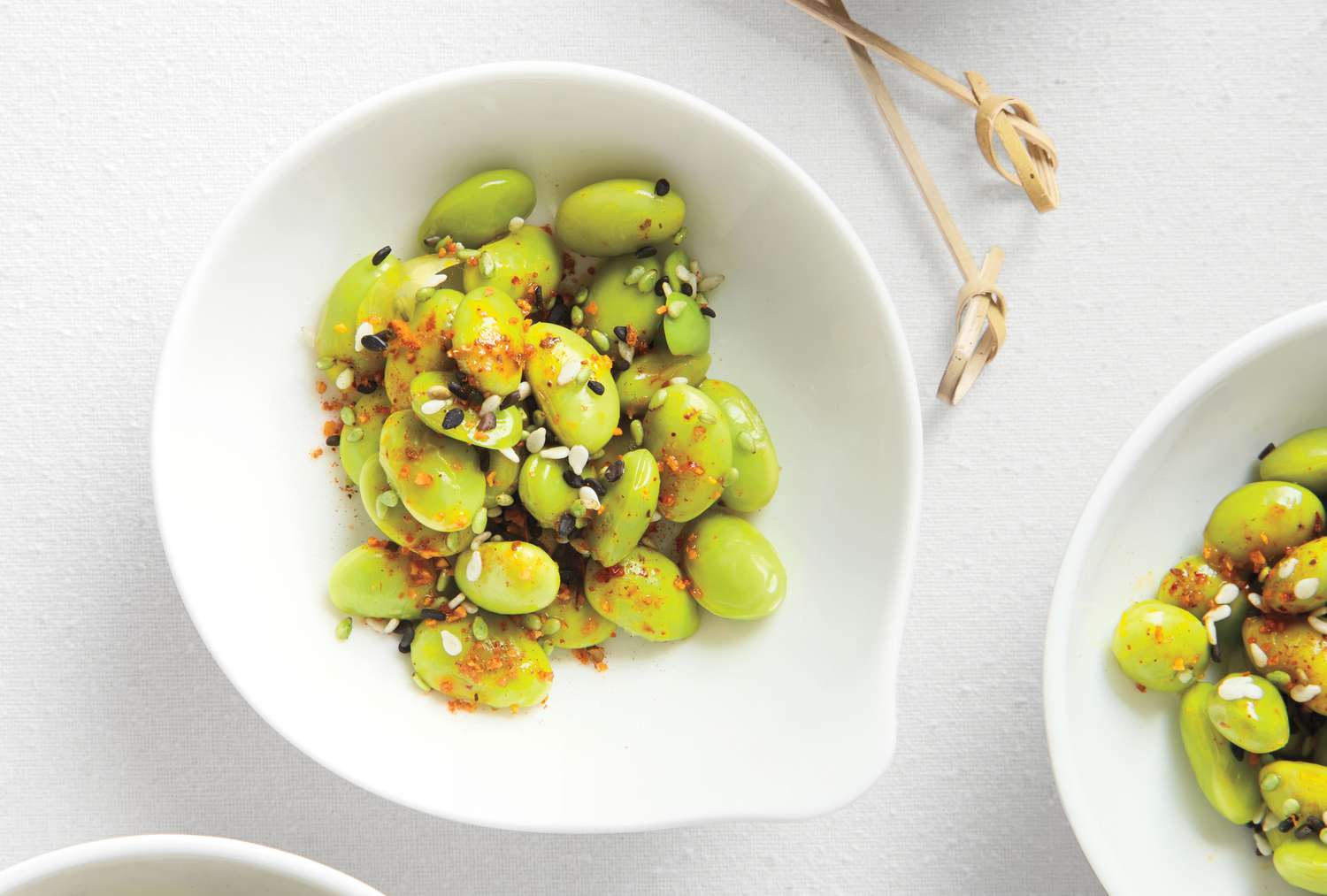
10 High-Protein Foods With More Protein Than Eggs (Some Will Surprise You!)
When it comes to healthy high-protein foods, eggs often make the list. But between the declining availability and rising prices, you’ve likely had to scale back on them. Fortunately, there are plenty of protein sources to choose from, and some have more protein than eggs. We asked nutritionists to share their top picks for high-protein foods that aren’t eggs—listed below in descending order—along with ideas for eating them at home. Some are unexpected, others more obvious; all are protein-packed and delicious.
- Stacy Cleveland, MS, RDN, LD, registered dietitian at The Ohio State University Wexner Medical Center
- Susan Greeley, MS, RDN, registered dietitian and instructor of plant-based culinary arts at the Institute of Culinary Education in New York City
- Lina Begdache, PhD, RDN, CNS-S, CDN, FAND, registered dietitian and associate professor of health and wellness studies at Binghamton University
Nuts
You’ll get about 7 grams of protein for every ¼ cup of nuts, according to Stacy Cleveland, MS, RDN, LD, registered dietitian at The Ohio State University Wexner Medical Center. Nuts also offer essential nutrients, including unsaturated (“good”) fats, fiber, magnesium, and zinc.
How to Eat
For the healthiest option, choose plain nuts sans added salt or sugar, says Cleveland. You can always roast and flavor nuts at home, which will allow you to control the ingredients.
Guava
Getty Images
An unexpected food with more protein than eggs is guava, a sweet tropical fruit. It offers an impressive 8 grams of protein per 2 cups, according to Susan Greeley, MS, RDN, registered dietitian and instructor of plant-based culinary arts at the Institute of Culinary Education in New York City. Additionally, guava (like most fruits) contains fiber, making it a delicious option for balancing blood sugar, per Greeley.
How to Eat
Beans
Compared to eggs, beans are cheaper and higher in protein. For example, ½ cup of black beans contains 8 grams of protein, according to Cleveland. Beans are also rich in fiber, a key nutrient for satiety, digestion, and gut health. To top it off, both dried and canned beans last longer than eggs, making them a shelf-stable alternative.
How to Eat
- Bulk up salad, pasta, soup, or rice with your favorite beans.
- Blend beans with oil, garlic, and spices for an easy bean dip.
- Top tacos or nachos with beans for a protein-rich meal.
Quinoa
One cup of cooked quinoa has approximately 8 grams of protein, according to data from the USDA. The whole grain also provides gut-friendly fiber, folate, and magnesium, according to the experts at Harvard T.H. Chan School of Public Health.
How to Eat
Greek Yogurt
Fuel up on protein, calcium, and probiotics with Greek yogurt. Depending on the brand, a single 5-ounce package offers 11 to 15 grams of protein, making it a great snack or complement to a meal, says Cleveland. Choose yogurt that is low in added sugar (less than 8 grams) for the healthiest choice, suggests Cleveland.
How to Eat
Cottage Cheese
If you’re not a fan of yogurt, reach for cottage cheese. Not only does it offer 15 grams of protein per ½ cup, but it’s also “a great source of calcium, potassium, phosphorous, and vitamin B2,” per Greeley.
How to Eat
- Start your day with cottage cheese pancakes for a light protein-packed meal.
- Serve cottage cheese topped with shredded vegetables, chopped fruit, or granola.
- Spread it on toast or crackers.
Edamame
Getty / Robynne O’Halloran
Another food with more protein than eggs is edamame, or young soybeans. Nosh on just ½ cup and you’ll get 19 grams of protein, according to data from the USDA. Edamame also contains omega-3 fatty acids, per Greeley. These fats help manage blood cholesterol and reduce inflammation, making them vital for overall health.
How to Eat
- Toss edamame in salads, snack on them alone, or include them in stir fry, suggests Greeley.
- Serve edamame on top of a grain bowl, per Greeley.
- Puree with cottage cheese and cilantro for a high-protein edamame dip.
Canned Tuna
One can (107 grams) of tuna packed in water contains 20 grams of protein, according to the experts at the USDA. It’s also “high in omega-3 fatty acids, which support heart and brain health, [and] contains selenium and vitamin D,” shares Lina Begdache, PhD, RDN, CNS-S, CDN, FAND, registered dietitian and associate professor of health and wellness studies at Binghamton University. Plus, canned tuna is shelf-stable and inexpensive, making it a budget-friendly alternative to eggs.
How to Eat
- Add flaked canned tuna to pasta dishes, like our one-pan creamy tuna pasta.
- Take a tip from Begdache and serve tuna salad in a wrap or with avocado.
- Make tuna cakes and serve with bread and leafy greens.
Chicken Breast
A 3-ounce serving of grilled boneless and skinless chicken breast provides a whopping 26 grams of protein, per the experts at the USDA. What’s more, it’s “rich in B vitamins, especially niacin and B6, which support energy metabolism and brain health,” share Begdache.
How to Eat
- Enjoy chicken breast in a salad, stir-fried with vegetables, or oven-baked with herbs and spices, Begdache says.
- Add it to pasta for a punch of protein.
- Make a classic chicken noodle soup or try a “zoodle” version with zucchini.
Tempeh
A top choice for high-protein foods is tempeh. One cup offers 34 grams of protein, per the experts at the USDA. Made of fermented soybeans, tempeh also provides probiotics and supports gut health, explains Begdache. Furthermore, tempeh is “high in fiber, calcium, and iron,” she adds.
How to Eat
- Add tempeh to a stir-fry in place of meat.
- Make a plant-based taco filling with crumbled tempeh, per Begdache.
- Use tempeh in potato hash for a satisfying breakfast.










